There are many types of basil worldwide. All of them are edible and differ in color, leaf shape, and taste. Sweet basil (Ocimum basilicum) is the most common basil found worldwide. It has a strong aroma and is often used in cooking.
Contents
Basil leaves are oval-shaped and glossy. They have smooth or slightly toothed edges. Basil plants produce delicate flower clusters in various colors, from white to bright purple. Although there are many basil varieties, other plants look similar to basil. These plants include:
- Chickweed – the plant size and leaves look like basil
- Spinach – the leaves look somewhat like basil leaves
- Lemon balm – the leaves and flowers resemble basil
- Lavender – the flowers look like basil
- Sesame – the leaves resemble basil leaves
- Nicotiana – the leaves look like basil leaves
- Nettle – the leaves resemble basil
- Licorice mint – the leaves and flowers look like basil
- Petunias – the leaves look like basil leaves
Considering the unique flavor profile of basil, mistaking one of these plants for sweet basil can lead to unfortunate mistakes in cooking. So, to help you distinguish between sweet basil and the 9 plants above, we’ll consider their similarities and differences.
1. Chickweed (Stellaria media)
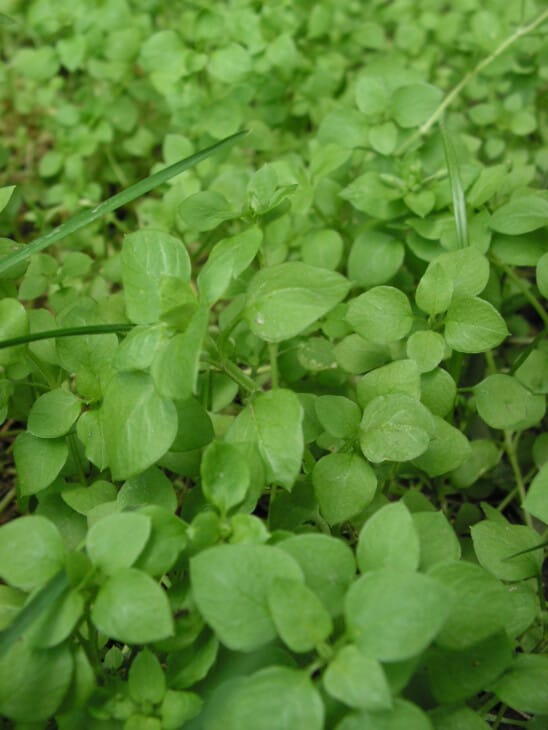
Chickweed is one flowering plant that people often mistake for basil. The chickweed plant grows up to 18 inches tall in the shade, making it roughly the same size as basil (12-24 inches).
Chickweed leaves are the same shape as basil leaves too, and their leaves also have delicate veins running through them like basil leaves. The leaves are darker than basil leaves, though. The plant is also covered in tiny, white hairs.
Unlike the square stems of basil plants, chickweed plants have round stems. Chickweed flowers are larger than basil flowers, are white, and grow individually. Like basil plants, chickweed plants are edible. They are cultivated worldwide for human and animal consumption.
2. Spinach (Spinacia oleracea)
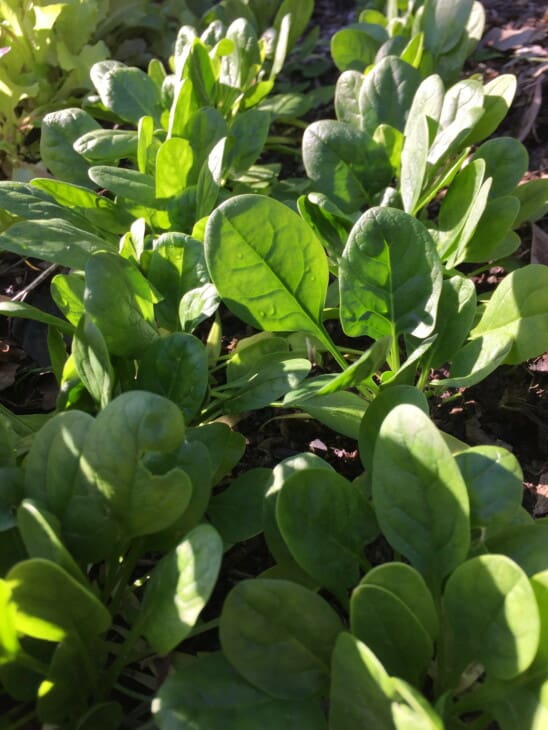
Spinach plants also have similar characteristics to basil plants. Spinach leaves look remarkably similar to basil leaves. They have the same color and veins. They also have a similar shape, though spinach leaves are more rounded than basil leaves. Spinach plants don’t grow as tall as basil plants.
Spinach flowers also grow in long, cone-shaped clusters like basil. However, where basil plants produce white or purple flowers, spinach plants create green ones. A spinach plant also lacks the characteristic smell of basil when you rub against it. Spinach is, of course, edible and is used in cooking worldwide.
3. Lemon Balm (Melissa officinalis)
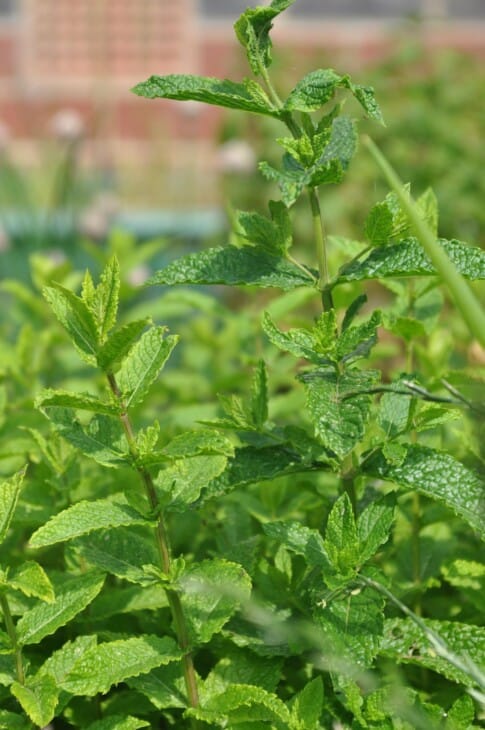
Another plant that looks somewhat similar to basil is lemon balm. This plant grows up to 36 inches tall, making it slightly bigger than a basil plant. Still, the leaves and flowers of a lemon balm remind one of basil. Lemon balm leaves look like a cross between basil leaves and mint leaves.
They are the same color and shape as basil leaves, and the leaves have tiny teeth around the edges. Lemon balm plants produce small flowers that grow in cone-shaped clusters, just like basil. The flowers are bright purple.
Lemon balm smells pleasantly of lemon, as you can imagine, which is one difference between it and basil. Lemon balm is also edible and often used in cooking.
Related: 6 Plants Similar To Lemon Balm
4. Lavender (Lavandula)
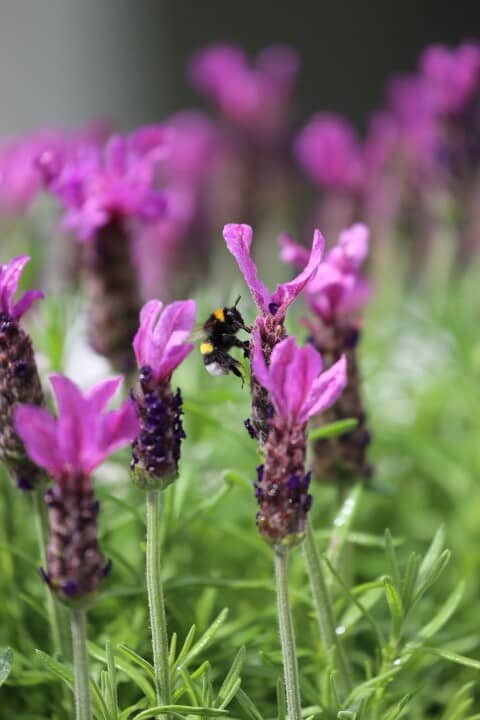
Although lavender shrubs are much larger than basil and have a potent aroma, the flower of a lavender plant looks very similar to basil flowers. Some lavender plants produce bright magenta flowers, a similar color to that of basil.
Lavender flowers also grow in long, cone-shaped clusters, just like basil. While lavender flower clusters are much larger than basil clusters, they remind one of basil in shape and color. Like basil, lavender is an aromatic plant and produces a lovely, calming scent when you rub against it.
Lavender is also edible and is often used to make tea or sauces for desserts when cooking.
5. Sesame (Sesamum indicum)
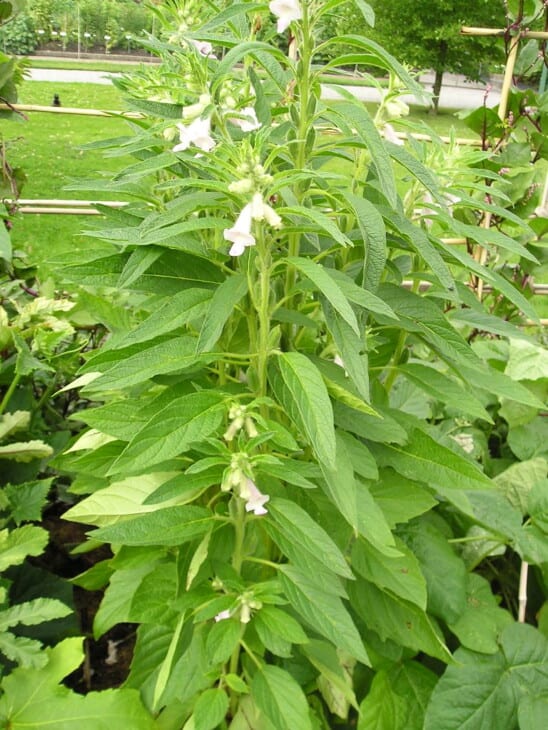
Sesame plants also have leaves that one can mistake for basil at first glance. Sesame plants have long, narrow leaves with pointed edges. The leaves are the same color as basil leaves and have visible veins, just like basil. It is easy to mistake a small sesame plant for basil.
While sesame looks similar to basil while young, it grows much larger than basil, reaching more than a foot tall when mature. Sesame plants also produce large, white flowers that result in long pods where the sesame seeds grow. Like basil, sesame plants are edible and are desired for their seeds.
6. Nicotiana (Nicotiana alata)
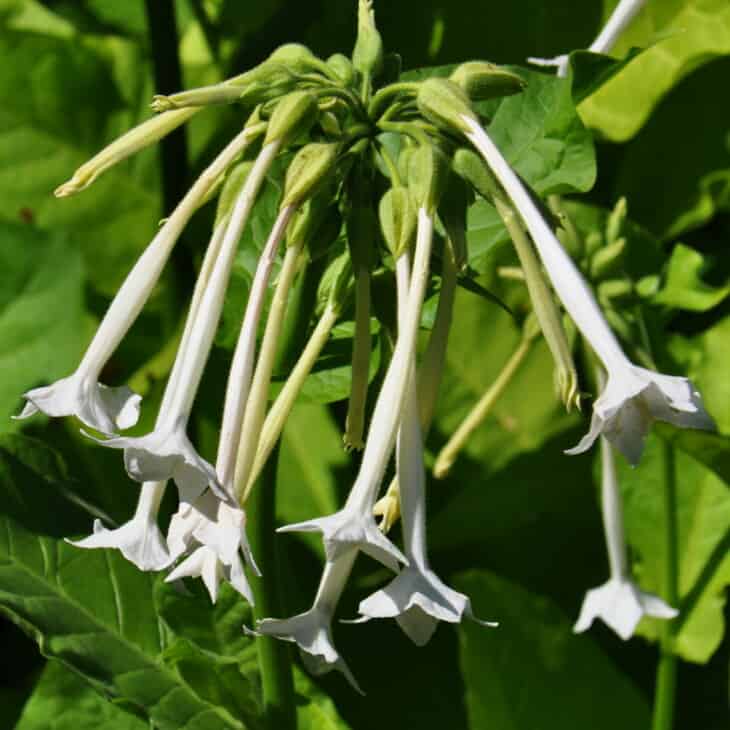
Nicotiana, or the tobacco plant, is another plant easily mistaken for basil when it is still young. Even an adult nicotiana resembles basil and looks like a huge basil plant. Nicotiana leaves are the same shape and color as basil leaves. They also have prominent veins and smooth edges, just like basil.
Nicotiana plants grow 6 feet tall, and the leaves are about 1 foot long. While some nicotiana plants are edible, others are toxic. Nicotiana plants also lack the trademark smell when you rub against a basil plant.
7. Nettle (Urtica dioica)
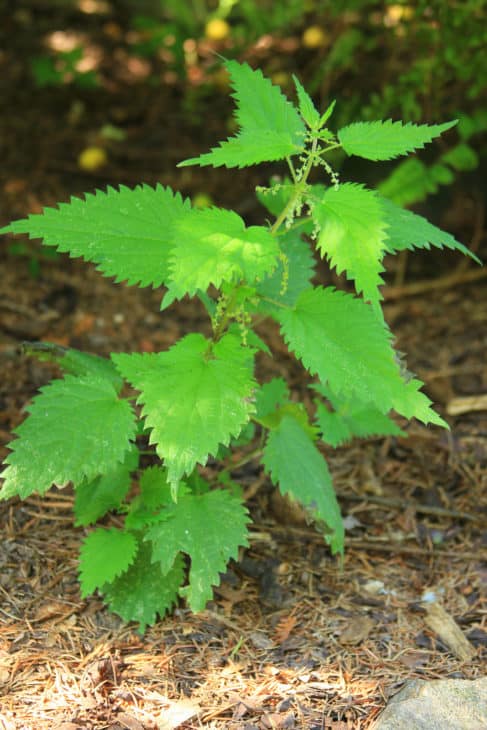
Although some nettle plants, like stinging nettles, are considered a weed and despised when found in your garden, they have similar characteristics to basil plants. Nettle leaves look precisely like basil leaves. They are the same shape, size, and color as basil leaves. They also have clear veins.
Some nettle plants are covered in white fur that appears on the leaves, which is how you can tell them apart from basil. Nettle plants also grow much larger than basil plants, and not all nettles are edible. They also don’t smell as pleasant when you touch them.
While some nettle plants are toxic, many are edible. They aren’t cultivated as food but can be used to make tea and herbal remedies for many ailments.
8. Licorice Mint (Agastache rupestris)
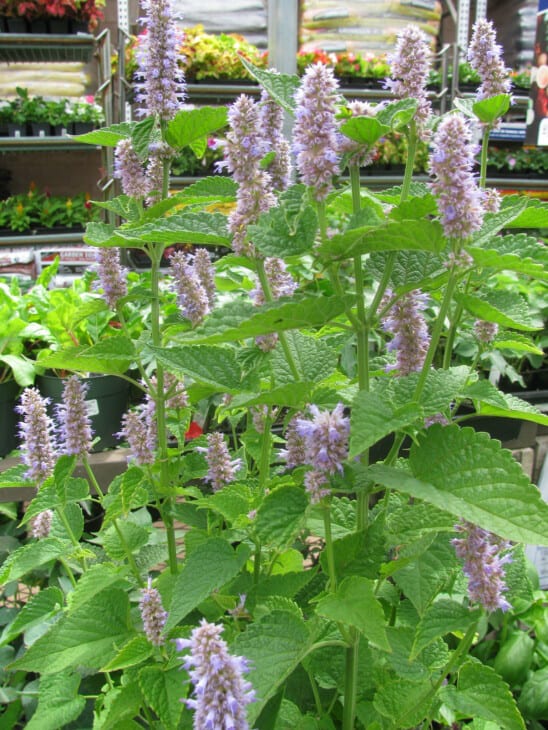
Since a basil plant is part of the Mint family, it should be no surprise that many mint plants look like basil, including licorice mint. Licorice mint can grow much larger than basil, but the shape and color of the leaves are the same as basil.
Licorice mint has small, oval-shaped leaves with clear veins and small toothed edges. Licorice mint plants also produce small, purple flowers that grow in cone-shaped clusters like basil. However, unlike basil, licorice mint smells like mint and aniseed when you brush against it.
Licorice mint is also edible and cultivated for human consumption worldwide, just like basil is.
9. Petunia (Petunioideae)
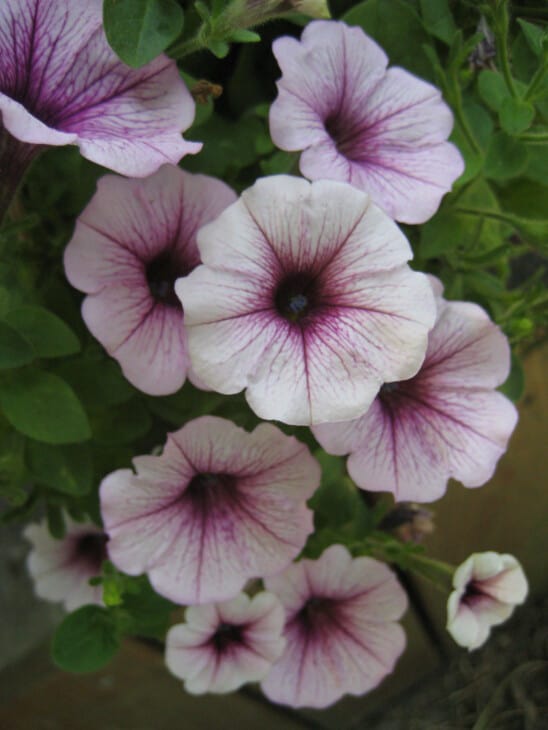
Finally, petunia plants also resemble basil to some extent. The leaves look similar to basil leaves when the plant is still small. Petunia leaves are flat and oval-shaped, with clear veins running through the leaves.
Related: Are Petunias Poisonous?
The leaves are a similar color to basil leaves, making it easy to mistake small petunia plants for basil at first glance. Still, when a petunia starts to blossom, there is no mistaking that this is not a basil plant. Petunias produce large, colorful flowers that attract many insects and animals.
Petunias aren’t edible, though. They are primarily used as ornamental plants and prized for their beautiful flowers rather than their culinary uses as basil is.







